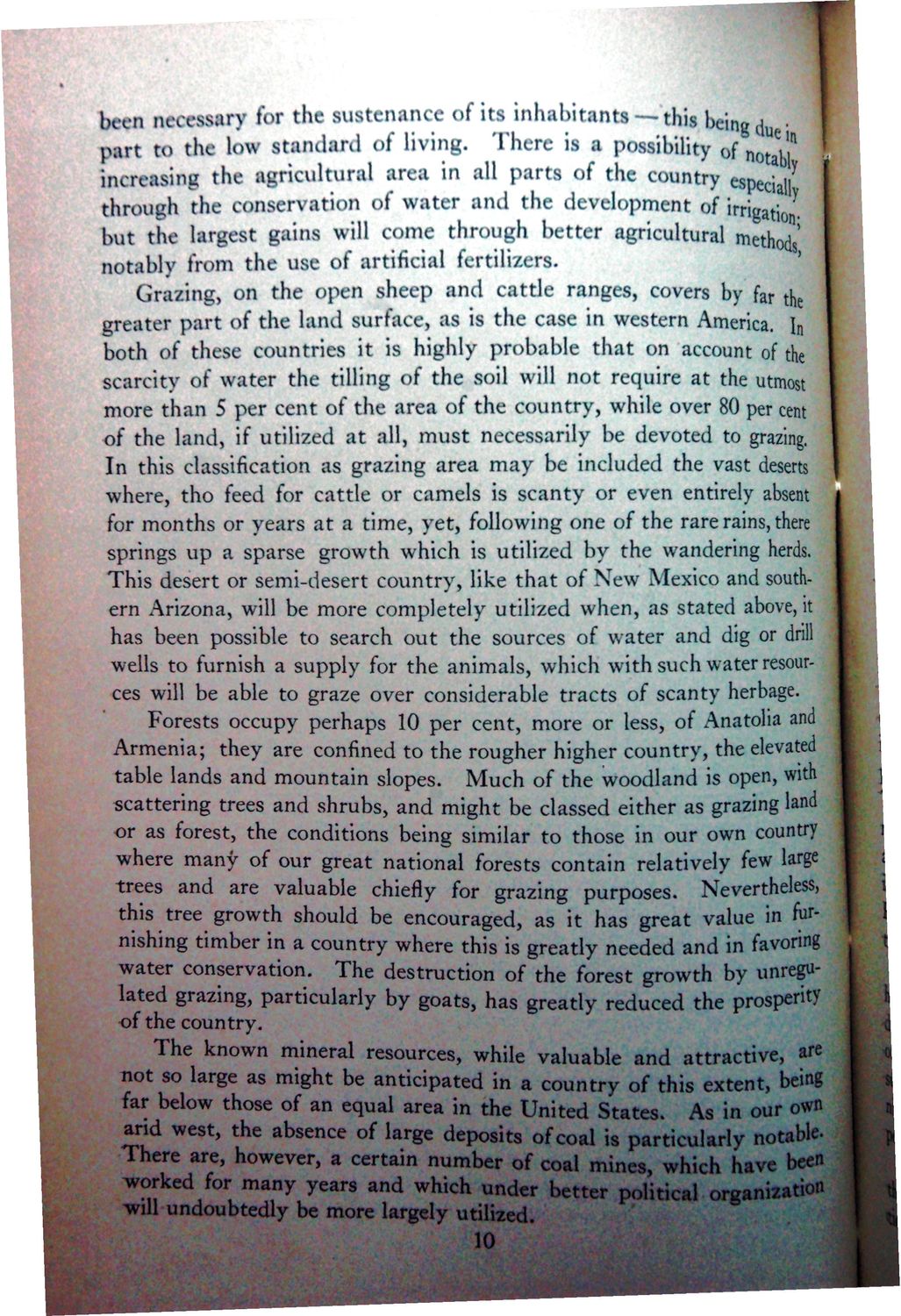| |
| |
Caption: War Publications - WWI Compilation 1923 - Article 23
This is a reduced-resolution page image for fast online browsing.

EXTRACTED TEXT FROM PAGE:
* e sustenance of its inhabitants — this being \ dard of living. There is a possibility 0f n S " ltural area in all parts of the country especiV incrcasin f the development of irrigatj^ through better agricultural methods' but t of artificial fertil Grazing, on the open sheep and cattle ranges, covers by far the greater part of the land surface, as is the case in western America, In both of these countries it is highly probable that on account of scarcity of water the tilling of the soil will not require at the utmost more than 5 per cent of the area of the country, while over 80 per cent of the land, if utilized at all, must necessarily be devoted to grazing. In this classification as grazing area may be included the vast deserts where, tho feed for cattle or camels is scanty or even entirely absent for months or years at a time, yet, following one of the rare rains, there springs up a sparse growth which is utilized by the wandering herds. This desert or semi-desert country, like that of New Mexico and southern Arizona, will be more completely utilized when, as stated above, it has been possible to search out the sources of water and dig or dnll wells to furnish a supply for the animals, which with such water resources will be able to graze over considerable tracts of scanty herbage. Forests occupy perhaps 10 per cent, more or less, of Anatolia and Armenia; they are confined to the rougher higher country, the elevated table lands and mountain slopes. Much of the woodland is open, scattering trees and shrubs, and might be classed either as grazing land or as forest, the conditions being similar to those in our own country where many of our great national forests contain relatively few large trees and are valuable chiefly for grazing purposes. Nevertheless, this tree growth should be encouraged, as it has great value in furnishing timber in a country where this is greatly needed and in favoring water conservation. The destru prosperity of the country. The known mineral resources, while valuable and attractive, are not so large as might be anticipated in a country of this extent, being far below those of an equal area in the United States. As in our own and west, the absence of large deposits of coal is particularly notable. There are, however, a certain number of coal mines, which have been worked for many years and which under better political organization will undoubtedly be more largely utilized. 10
| |